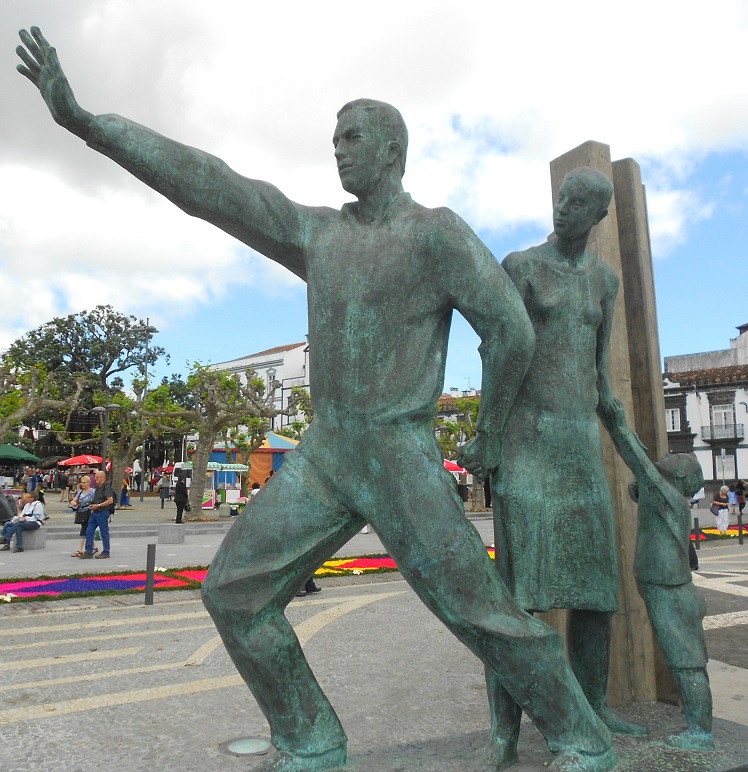TRAVEL: THE EMIGRANTES
We came upon the Monumento ao Emigrante in Ponta Delgada, across Avenida Infante Dom Henrique, close to Forte S. Brás and Campo de São
Francisco: a bronze family in a permanent act of immigrating. The father, with one arm lifted high, points towards the future, his other hand holds fast to
his wife’s hand as she stands behind him, holding the hand of their little son. Neither parent acknowledges the child’s intense plea to stay.
This homage to Azorean immigrants left me stunned when I first saw it in the year 2000. The statues were a visual symbol of me and my parents and all the
thousands of families who left the islands for other worlds. It captured the grief and tearing apart I had felt decades earlier when, one rainy dark
morning, I walked down the street with my parents, against my will, to a foreign country.
I had traveled to the Azores with my Anglo-Canadian partner, excited to show him the place of my birth and early childhood. For over six years he had heard
my stories of immigration. The statue revealed for him our lives as emigrantes in ways I could not have anticipated. He wept with heartfelt sorrow as he finally understood the meaning of saudade.
It also frightened him to witness my visceral reaction to the island of my birth. The encounter provoked shock waves of emotion through me right from the
moment I spotted the presépio landscape from my airplane window. The smells, the sounds, the humidity and the scent of ocean clinging to walls,
awoke all my dormant longing and desire for my childhood home after such a long absence.
He saw me raptured into a world of mythical magnitude as my Canadian “self” slipped away. I could not even bare his presence pulling me back to exile. It
upset me to speak English as I no longer wanted to be in translation. I wanted to immerse myself in the Portuguese language. This was the key to entering and
losing myself again in my boyhood world.
The trip almost ended our relationship, so violent were my emotions of reconnecting with home.
We survived the trauma that our vacation triggered in us, and we are still together, partly because the statues allowed my partner to feel a lasting
kindness for my fractured, ambivalent soul: half Canadian; half Azorean; and in many ways still the confused little boy who wondered for so long why he had to leave his island home.
I have returned to the Azores several times since then and each new visit feels like a homecoming. There is less saudade and more healing with each
visit, and the pain of my immigration is fading away. Now I stand again in front of the “Emigrantes” wishing that the bronze family might move
beyond that captured moment of leaving. I wish I could embrace the boy and tell him that it will be alright.
I hope that we, who have experienced the Azorean diaspora, can be freed, too, knowing that we can belong to our islands again, even though home has become elsewhere.
EMANUEL MELO



